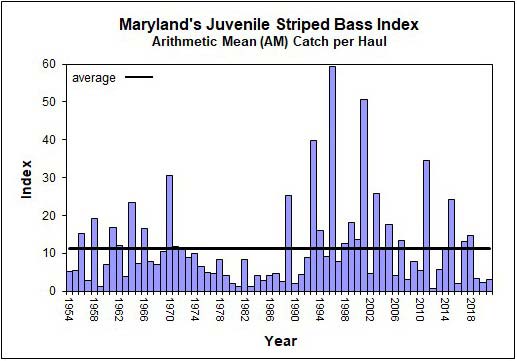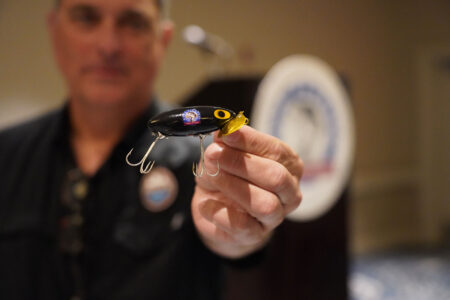
The Maryland Department of Natural Resources announced the results of this year’s juvenile striped bass survey, which tracks the reproductive success of the iconic fish in the Chesapeake Bay. The 2021 young-of-the-year index is 3.2 which is slightly higher than last year but still below the long-term average of 11.4.
The coastal striped bass population has decreased in size, but is still capable of strong reproduction with the right environmental conditions. Variable spawning success is a well-known characteristic of the species. The index is slightly higher than 2020 but consecutive below average indices are a concern, and biologists continue to examine factors that might be limiting spawning success.
Atlantic Coast states enacted responsible conservation measures in recent years to reduce harvest and protect striped bass during spawning season. Maryland will work with other states in the Atlantic States Marine Fisheries Commission to develop additional measures to enhance the striped bass population through the Atlantic striped bass fishery management plan.
Other noteworthy observations of the survey were increased numbers of Atlantic menhaden in the Choptank River and healthy reproduction of American shad in the Potomac River. The survey also documented reproduction of invasive blue catfish in the upper Chesapeake Bay for the first time.
Twenty-two survey sites are located in four major spawning areas: the Choptank, Nanticoke, and Potomac rivers, and the Upper Chesapeake Bay. Biologists visit each site three times per summer, collecting fish with two sweeps of a 100-foot beach seine net. The index represents the average number of recently hatched striped bass, known regionally as rockfish, captured in each sample. The 2021 survey marks the third consecutive year and the sixth out of the last ten with below-average recruitment; the surveys from 2019 through 2021 outline a troubling trend not seen since the late 1980s, of consecutive surveys with returns below 4.





